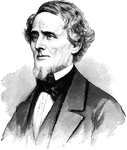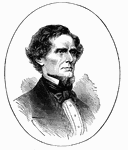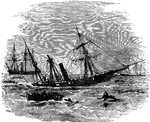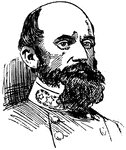
Cumberland Army
"The army of the Cumberland- Wilder's mounted infantry passing a blockhouse on the Nashville and Chattanooga…

Cumberland Gap
"Cumberland Gap and Heights, Tenn., from the Kentucky side. Cumberland Gap was a place of such importance…
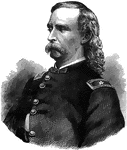
George Custer
"General George A. Custer, born in New Rumley, Harrison County, Ohio, December 5th, 1839, died in Montana,…
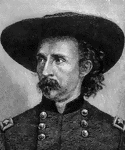
George Armstrong Custer
"George Armstrong Custer, a brilliant cavalry officer, was born at New Rumley, Ohio, December 5, 1839.…

Cutting Levees
"Cutting the levees near the state line of Louisiana and Arkansas, twenty miles above Lake Providence,…

Ulric Dahlgren
"Colonel Ulric Dahlgren, born in Bucks County, Pa., in 1842, died near King and Queen's Courthouse,…
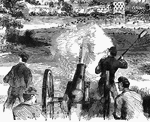
Battle at Dam No. 4
"Battle at Dam No. 4, Potomac River, between Butterfield's brigade and a large Confederate force. A…

Battle at Dam No. 4
"Battle at Dam No. 4, Potomac River, between Butterfield's brigade and a large Confederate force. A…

Battle at Dam No. 4
"Battle at Dam No. 4, Potomac River, between Butterfield's brigade and a large Confederate force. A…
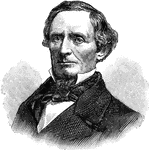
Jefferson Davis
Jefferson Finis Davis (1808 – 1889) served as President of the Confederate States of America for…
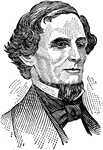
Jefferson Davis
The first and only President of the Confederate States of America, from 1861 to 1865.

Jefferson Davis
Jefferson Davis, a senator from Mississippi who was elected president of the Confederate States of America.…
!["Capture of Fort De Russy, La., on the 14th of March, 1864, by the Federal forces under General Andrew Jackson Smith. This fort was captured, March 14th, 1864, by the Federal forces under General A. J. Smith. The expedition left Vicksburg on March 10th, landed at Summerville, La., on the 13th, and marched to Bayou Glace, where General Scurri's Confederate brigade had been encamped, which fled on the approach of the transports, leaving considerable camp equipage and commissary stores. General Smith pushed forward to Yellow Bayou, where strong fortifications had been erected; but the Confederates again fled. As he came up the enemy was pressed, and some skirmishing occurred, resulting in the capture of several prisoners and a small wagon train. At daylight the entire command started for Fort de Russy, twenty-eight miles distant, hotly pursued by General Dick Taylor, who hoped to save the fort; but Smith had the lead, and at four o'clock in the afternoon the Third and Ninth Indiana Batteries opened on the fort, which replied vigorously with three of its heaviest guns. The cannonade continued an hour, when General Smith ordered the First and Second illinois Regiments, Sixteenth Corps, under General Mower, to charge the enemy's rifle pits and storm the fort. The Eighty-ninth and One Hundred and Nineteenth Indiana and Twenty-fourth Missouri Regiments charged over deep ditches and a thick abatis in the face of a galling fire, and within twenty minutes after the order was given the [African American] sergeant of the Fifty-eighth Illinois Volunteers planted the American flag upon the enemy's works."— Frank Leslie, 1896](https://etc.usf.edu/clipart/11700/11750/derussy_11750_mth.gif)
Fort de Russy
"Capture of Fort De Russy, La., on the 14th of March, 1864, by the Federal forces under General Andrew…

Distributing
"Distributing rations and appointing a knapsack guard before a reconnoissance near Warrentown, Va. Our…

Fac-smile of General John A. Dix's Dispatch
John Adams Dix, of New York, was appointed Secretary of the Treasury. He sent Mr. Jones to New Orleans…
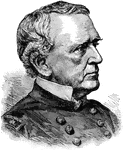
General John A. Dix
John Adams Dix (1798 - 1879) served as the Secretary of the Treasury, U.S. Senator, and New York Governor.…
!["A detachment of the First South Carolina [African American] Federal Volunteers, under the command of Colonel Beard, repelling the attack of Confederate troops in the vicinity of Doboy River, GA." —Leslie, 1896](https://etc.usf.edu/clipart/11200/11251/doboy_11251_mth.gif)
Doboy River
"A detachment of the First South Carolina [African American] Federal Volunteers, under the command of…

Drilling Troops
The influx of Northern regiments of troops into Washington during the early days of the war rendered…
!["The war in Virginia. The Twenty-second [African American] Regiment, Duncan's Brigade, carrying the first line of Confederate works before Petersburg. On the morning of the 15th of June, 1864, General Hinks formed his command in line of battle, and advanced upon the Confederates, with Duncan commanding his right and Holman his left. The result of this charge was waited for with great anxiety. The majority of the whites expected that the [African American] troops would run, but the sable forces astonished everybody by their achievements. With a wild yell that must have struck terror into the hearts of their foes, the Twenty-second and Fifth United States [African American] regiments, commanded by Colonels Kidder and Connor, charged, under a hot fire of musketry and artillery, over the Confederate ditch and parapet, and drove the enemy before them, capturing a large field-piece, and taking entire possession of their works, its defenders, Ferrybee's Fourth North Carolina Cavalry, and Graham's Petersburg Battery, seeking safety in rapid flight, leaving their dead and wounded in the works."— Frank Leslie, 1896](https://etc.usf.edu/clipart/11700/11799/duncan-brig_11799_mth.gif)
Duncan's Brigade
"The war in Virginia. The Twenty-second [African American] Regiment, Duncan's Brigade, carrying the…

Dutch Gap Canal
"Blowing out of the bulkhead of the Dutch Gap Canal, James River, Va., January 1st, 1865. At twelve…

Edward's Ferry
"Edward's Ferry, Md., below Harrison's Island, on the Potomac River, the place of the passage of General…

Edward's Ferry
"Successful retreat of the Federal troops from the Virginia shore across a canal-boat bridge at Edward's…

Eighteenth Corps
"The war in Virginia. A regiment of the Eighteenth Corps carrying a portion of Beauregard's line in…

Eighteenth Corps
"The war in Virginia, the Eighteenth Army Corps storming a fort on the right of the Confederate line…
![From the painting, "First Reading of the Emancipation Proclamation of President Lincoln" by Francis Bicknell Carpenter. From left to right: Edwin Stanton (Secretary of War), Salmon Chase (Secretary of the Treasury), Abraham Lincoln (President of the United States), Gideon Welles (Secretary of the Navy), Caleb B. Smith (Secretary of the Interior), William Seward [sitting] (Secretary of State), Montgomery Blair (Postmaster General), and Edward Bates (Attorney General).](https://etc.usf.edu/clipart/56400/56428/56428_emanc_proc_mth.gif)
Emancipation Proclamation
From the painting, "First Reading of the Emancipation Proclamation of President Lincoln" by Francis…

Encampment of Colonel Max Weber's Rifle Regiment
"Encampment of Colonel Max Weber's German Turner Rifle Regiment, Twentieth New York Volunteers, at Hampton…

John Ericsson
John Ericsson (1803 - 1889) was a Swedish inventor and mechanical engineer. After the Civil War began,…
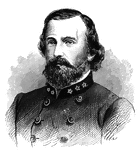
General Richard S. Ewell
"General Ewell, born in Georgetown, D. C., February 8th, 1817, died in Springfield, Tenn., January 25th,…

Execution Preparations
"Preparing the prisoner for execution- putting on the black robe."— Frank Leslie, 1896

Explosion
"Explosion of 3,000 musket cartridges in a tent at Fort Totten, New Berne, N. C., the headquarters of…
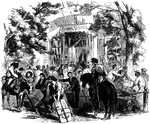
Adams Express
"Scene in Adams Express office, at Fortress Monroe, VA., in 1861- Volunteers receiving letters and packages…

Falling Waters
"Gallant charge of the Sixth Michigan cavalry over the enemy's breastworks, near falling Waters, Md.,…

Falmouth
"Federal troops marching back into Falmouth after the Battle of Chancellorsville."— Frank Leslie,…
Falmouth
"The town of Falmouth, Va. on the Rappahannock, opposite Fredericksburg. Headquarters of General Burnside…

Farmers Visiting
"Maryland and Pennsylvania farmers visiting the battlefield of Antietam, while the Federal troops were…

Admiral David Farragut
Admiral Farragut entering Mobile Bay atop the rigging of his ship during the Civil War.

Admiral David G. Farragut
"Admiral Farragut, born at Campbell's Station, near Knoxville, Tenn., July 5th, 1801, died in Portsmouth,…
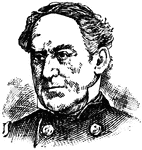
David Glasgow Farragut
(1801-1870) American naval officer for the Confederates during the Civil War.
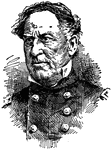
David Glasgow Farragut
David Glasgow Farragut (July 5, 1801 – August 14, 1870) was a flag officer of the United States Navy…

Review of Federal Army
"President Lincoln, attended by General McClellan and staff, reviewing the Federal army, on Tuesday,…
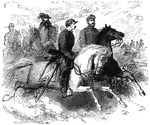
Federal Cavalry Leaders
"Federal Cavalry Leaders. Generals Pleasonton, Bayard and Colonel Percy Wyndham making a reconnoissance,…
Federal Fleet
"Panoramic view of the Federal fleet passing the forts of the Mississippi, on its way to New Orleans,…

Federal Hill
"Federal Hill, Baltimore, taken from the North side basin, occupied by the Federal Troops."— Frank…

Federal Kitchen
"The Federal Kitchen on the march to Fredericksburg with three days' rations." — Frank Leslie,…

Federal Prisoners
"Federal cavalry covering the escape of Federal prisoners from Libby Prison, Richmond, Va. The feeling…

Federal supply train
"Confederate cavalry attacking a Federal supply train, near Jasper, Tenn. We give a sketch of the capture…

Federals Crossing
"Federal Volunteers crossing from Cincinnati to Covington on a bridge of coal boats, constructed for…

